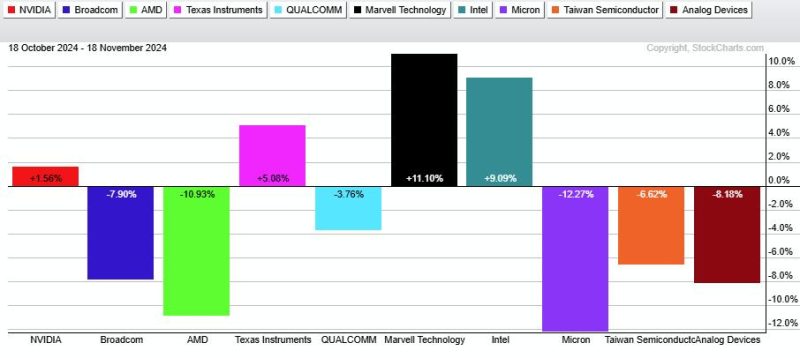
Cracking the Code: SMH vs. SOXX – Two Semiconductor ETFs Face Off!
In the ever-evolving landscape of the semiconductor industry, exchange-traded funds (ETFs) play a crucial role in providing investors with exposure to this fast-paced sector. Two prominent semiconductor ETFs, the VanEck Vectors Semiconductor ETF (SMH) and the iShares PHLX Semiconductor ETF (SOXX), have attracted significant attention from market participants due to their performance and holdings. While both ETFs are focused on the semiconductor sector, there are distinct differences in their composition and performance that set them apart.
The VanEck Vectors Semiconductor ETF (SMH) has been holding up better than the iShares PHLX Semiconductor ETF (SOXX) in recent times. This outperformance can be attributed to several factors, one of which is the difference in their top holdings. SMH has a more concentrated portfolio, with its top ten holdings accounting for a larger percentage of the total assets compared to SOXX. This concentration can amplify the positive impact of strong performance by a few key companies on the overall ETF performance.
Additionally, the weighting methodology of the two ETFs differs, which also contributes to their varying performance. SMH follows a market-cap-weighted index, which means that companies with larger market capitalizations have a greater influence on the ETF’s performance. On the other hand, SOXX uses a modified market-cap-weighted methodology that caps the weight of individual securities, resulting in a more balanced exposure across the portfolio.
Another factor influencing the performance discrepancy between SMH and SOXX is the sector allocation of the two ETFs. While both ETFs primarily focus on semiconductor companies, SMH has a slightly different sector breakdown compared to SOXX. This variation in sector exposure can impact the ETFs’ performance differently, especially during market fluctuations or changes in industry trends.
Furthermore, the geographic exposure of the two ETFs plays a role in their performance divergence. SMH has a higher concentration of U.S.-based companies in its portfolio, while SOXX has a more diversified global exposure. This geographical distribution can result in differing performance outcomes based on economic conditions, regulatory changes, or geopolitical events affecting specific regions.
In conclusion, while both the VanEck Vectors Semiconductor ETF (SMH) and the iShares PHLX Semiconductor ETF (SOXX) provide investors with exposure to the semiconductor industry, their varying composition, weighting methodology, sector allocation, and geographic exposure contribute to their distinct performance outcomes. Understanding these differences is essential for investors seeking to capitalize on the opportunities presented by the dynamic semiconductor sector. By evaluating the unique characteristics of each ETF, investors can make informed decisions aligning with their investment objectives and risk tolerance in the ever-evolving semiconductor landscape.
